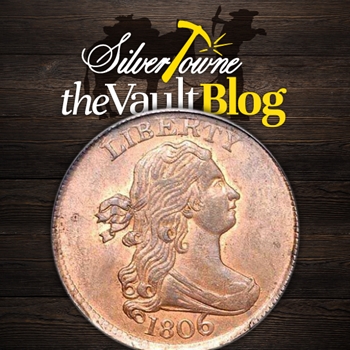
To be first in or of anything is quite remarkable if you really think about it. To be the first at a place such as the United States Mint is extremely remarkable. To be the first Chief Engraver of the United States Mint, well that is something no one can ever change. That is history-making.
Continuing our blog series on the highly appointed position that is Chief Engraver of the United States Mint, we uncover the legacy that is Robert Scot. With the first to be named to the position, Scot had a hand in a number of Draped Bust coins, in addition to others, that collectors are still after today.
Scot’s Early Years
Born in 1744 in Edinburgh, Scotland, Robert Scot grew up to develop skills as a silversmith and watchmaker in England. While working in those two fields, he soon developed skills as an engraver. In 1775, he would pick up and move across the pond where he would land in Fredericksburg, Virginia.
Working In the States
Before involving himself in coins, Scot first started out being known for engraving banknotes. After being impressed with his work engraving plates for subsistence money, office scales, and bills of exchange, he was appointed by the Commonwealth of Virginia in 1780 to become their engraver. After his impact landed at that position, he was noticed by none other than the second President of the United States, Thomas Jefferson. Scot later moved to Philadelphia, Pennsylvania, in 1781 where he would eventually become appointed to the Chief Engraver position by George Washington on November 23, 1793.
1st Chief Engraver of the United States Mint
Under the first Director of the Mint, David Rittenhouse, many early United States coins were designed and engraved by Scot. More popularly, the Draped Bust obverse design that showed up on a number of denominations including the Half Cent, Large Cent, Half Dime, Bust Dime, Quarter, Half Dollar, and Silver Dollar. He also designed each variety (there were two) that featured the small eagle and heraldic eagle on the reverse of the coins.
In 1816, Scot was asked by the Mint to redesign the Classic Head Large Cent as it was being heavily criticized by consumers. Although modeled after Scot’s Draped Bust designs, his second engraver and assistant, John Reich, was actually the one who redesigned the Classic Head Large Cent. The modified version would then be engraved by Scot as the title would also be renamed to the Coronet Matron Liberty Head Large Cent. Criticism of the previous design would point out that Lady Liberty’s face was too young. The term “Matron” would surely insist differently as her face was made to look older and more mature. This overall design would go on to inspire other designers when it came to the coronet liberty head styles on coins.
Other coins that can be attributed to Scot’s portfolio while at the Mint are the Liberty Cap Half Cent (Head Facing Right variety), Flowing Hair Half Dollar as well as the Silver Dollar, and the Flowing Hair Half Dime. He was involved in designs for common United States coinage at the time but was also heavily involved in some of the first gold coins to come from the Mint. Those coin designs include the $2.5 Gold Turban Head Quarter Eagle, $5 Turban Head Gold Half Eagle, and the $10 Capped Turban Head Gold Eagle. Overall, Scot’s work in early United States coinage made way for a lot of designs seen in modern coinage today.
Robert Scot passed away in his late 70’s years later while still in office on November 1, 1823. His successor, William Kneass, would be named second Chief Engraver of the United States on January 29, 1824.
Source: USA Coinbook







